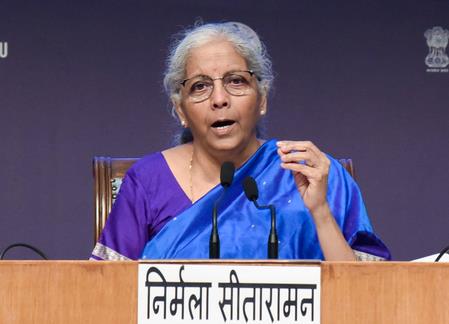GST Reforms May Cost Centre Just 0.05 Pc Of GDP: Bernstein
This amounts to only 0.05 per cent of India's projected GDP for FY26, the report said.
On September 3, the government unveiled major GST reforms, reducing the number of tax slabs and lowering rates on a wide range of goods.
From daily-use FMCG items to cars, white goods, and insurance, most products are set to become cheaper from September 22.
Analysts believe these measures will stimulate demand, improve tax compliance, and give a strong push to consumption-led growth.
Bernstein's latest India Strategy Note highlights that while the reforms will lead to a short-term revenue hit, the overall impact on the economy remains limited.
The brokerage estimates a revenue loss of Rs 79,600 crore due to rationalising the 12 per cent slab to 5 per cent, and another Rs 1.12 lakh crore from scrapping the 28 per cent slab.
These losses will be only partially offset by gains of Rs 700 crore from the 12 to 18 per cent shift and Rs 15,000 crore from moving certain items from 28 to 40 per cent.
Taking into account these changes, the combined revenue loss for the Centre and states is expected to be around Rs 1.57 lakh crore.
The Centre's share comes to about Rs 74,000 crore. Bernstein further assumes a 5 per cent cut in capital expenditure, worth Rs 56,000 crore, to balance the revenue shortfall.
As a result, the actual fiscal burden for the Centre narrows to Rs 18,000 crore.
Meanwhile, HSBC in a separate report said the gross revenue loss from the tax cuts could be around Rs 9.3 lakh crore ($10.8 billion) based on the FY24 consumption base.
Revenues redirected from the compensation cess into the new 40 per cent GST bracket could fund nearly Rs 4.5 lakh crore ($5.2 billion) of that loss, leaving a net shortfall of about Rs 4.8 lakh crore ($5.6 billion), or 0.16 per cent of GDP.
Scaling this to the FY26 base, HSBC estimates a revenue loss of Rs 5.7 lakh crore, which would still equal only 0.16 per cent of GDP over a year.
Given that only half the fiscal year is left, the fiscal implication for FY26 would be around 0.1 per cent of GDP.
Both reports suggest that while GST reforms will lead to some revenue loss for the government, the long-term benefits of higher consumption and stronger compliance will outweigh the short-term fiscal hit.

Legal Disclaimer:
MENAFN provides the
information “as is” without warranty of any kind. We do not accept
any responsibility or liability for the accuracy, content, images,
videos, licenses, completeness, legality, or reliability of the information
contained in this article. If you have any complaints or copyright
issues related to this article, kindly contact the provider above.
Most popular stories
Market Research

- Daytrading Publishes New Study On The Dangers Of AI Tools Used By Traders
- Primexbt Launches Empowering Traders To Succeed Campaign, Leading A New Era Of Trading
- Wallpaper Market Size, Industry Overview, Latest Insights And Forecast 2025-2033
- Excellion Finance Scales Market-Neutral Defi Strategies With Fordefi's MPC Wallet
- ROVR Releases Open Dataset To Power The Future Of Spatial AI, Robotics, And Autonomous Systems
- Ethereum-Based Meme Project Pepeto ($PEPETO) Surges Past $6.5M In Presale






















Comments
No comment